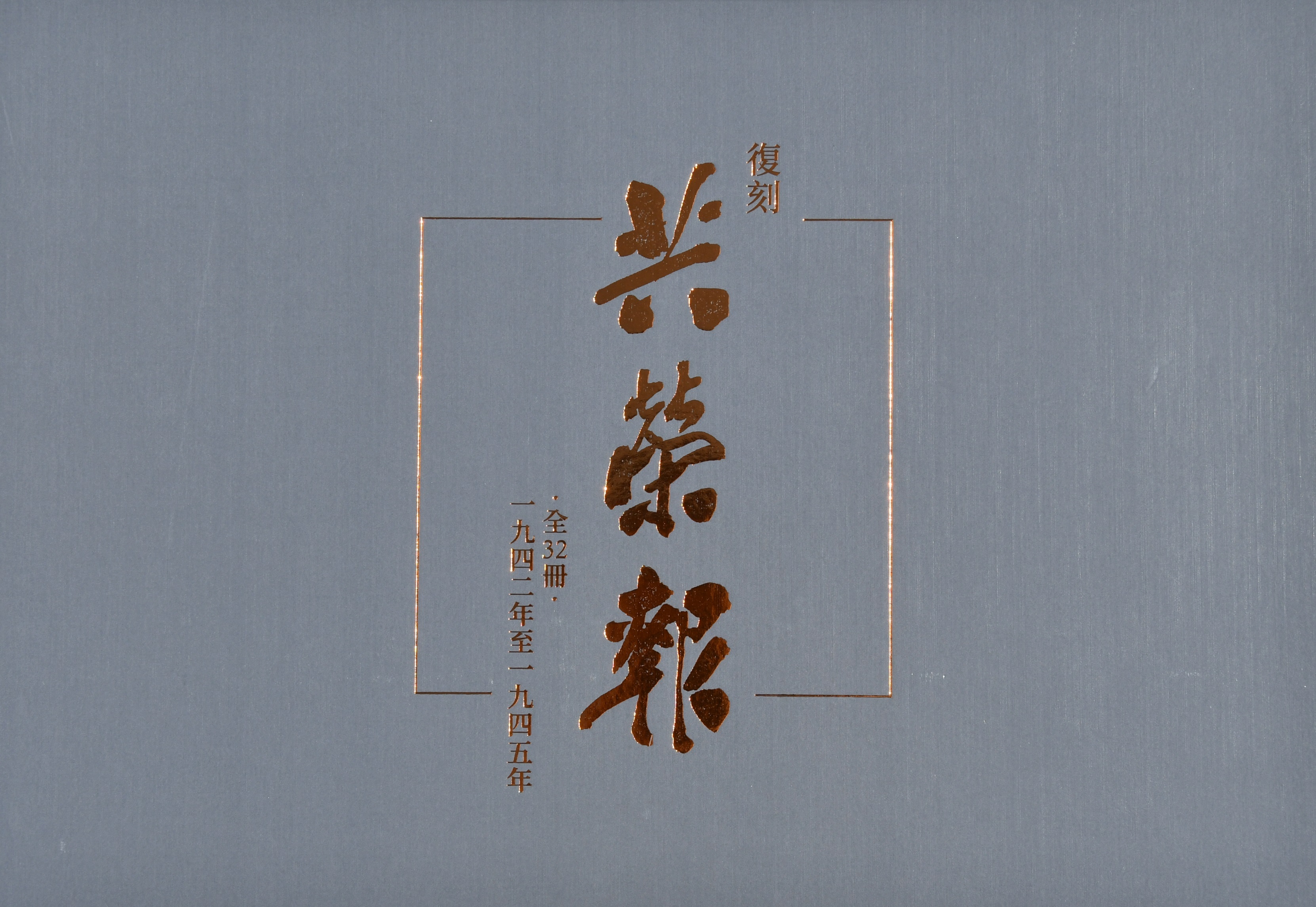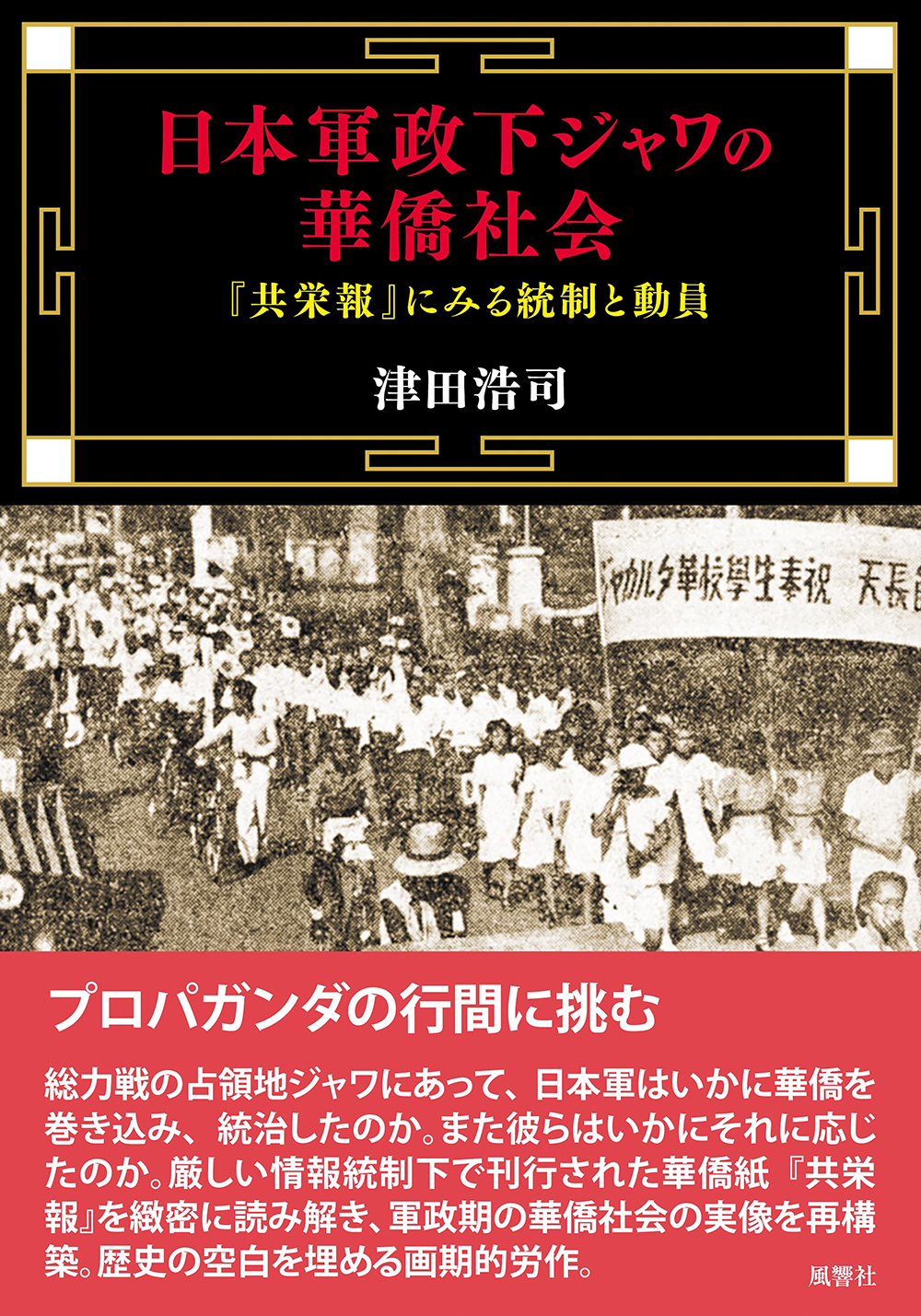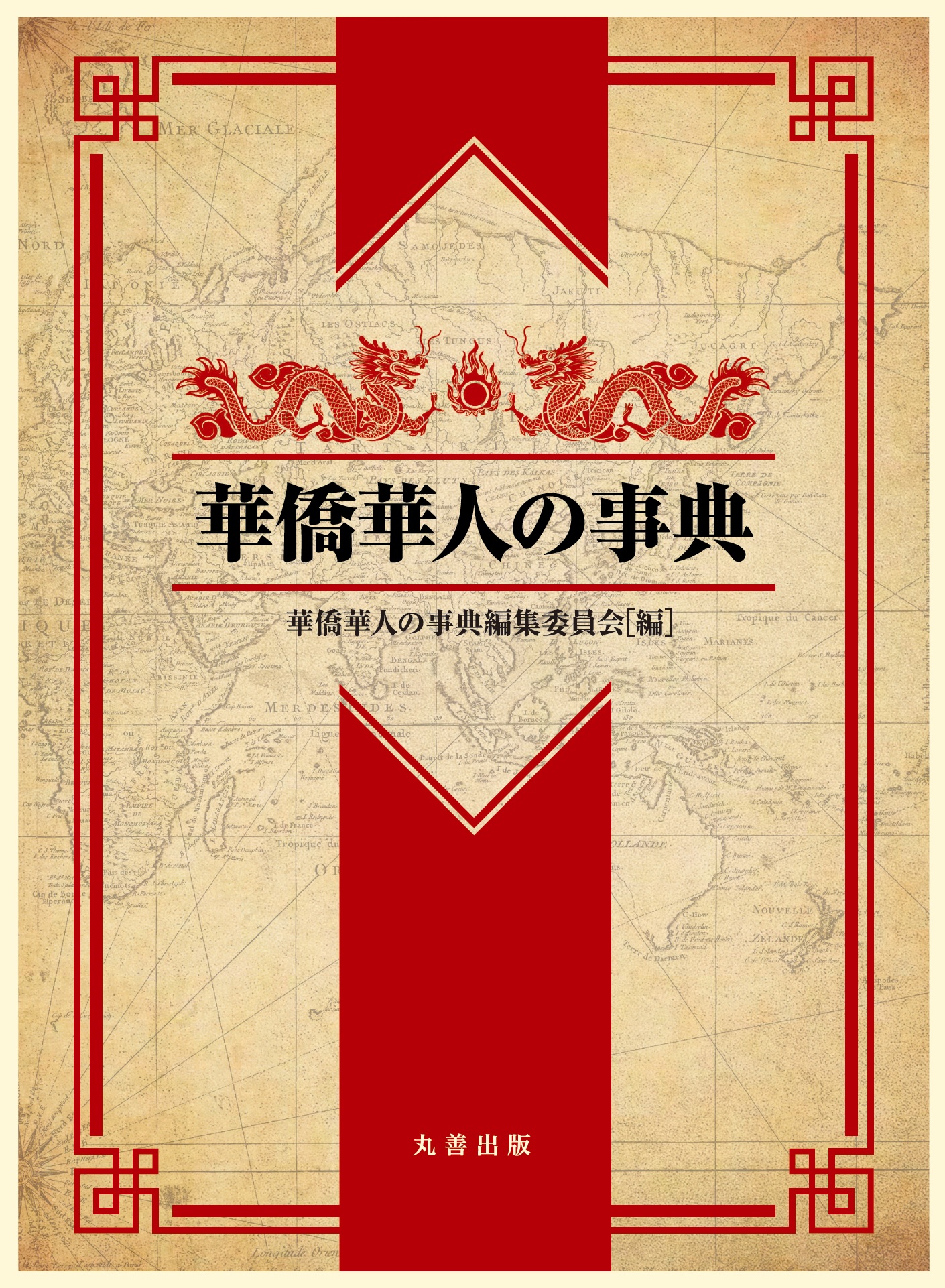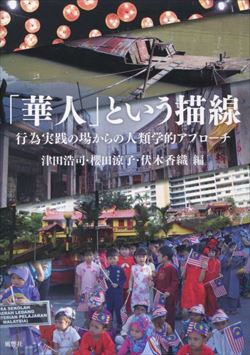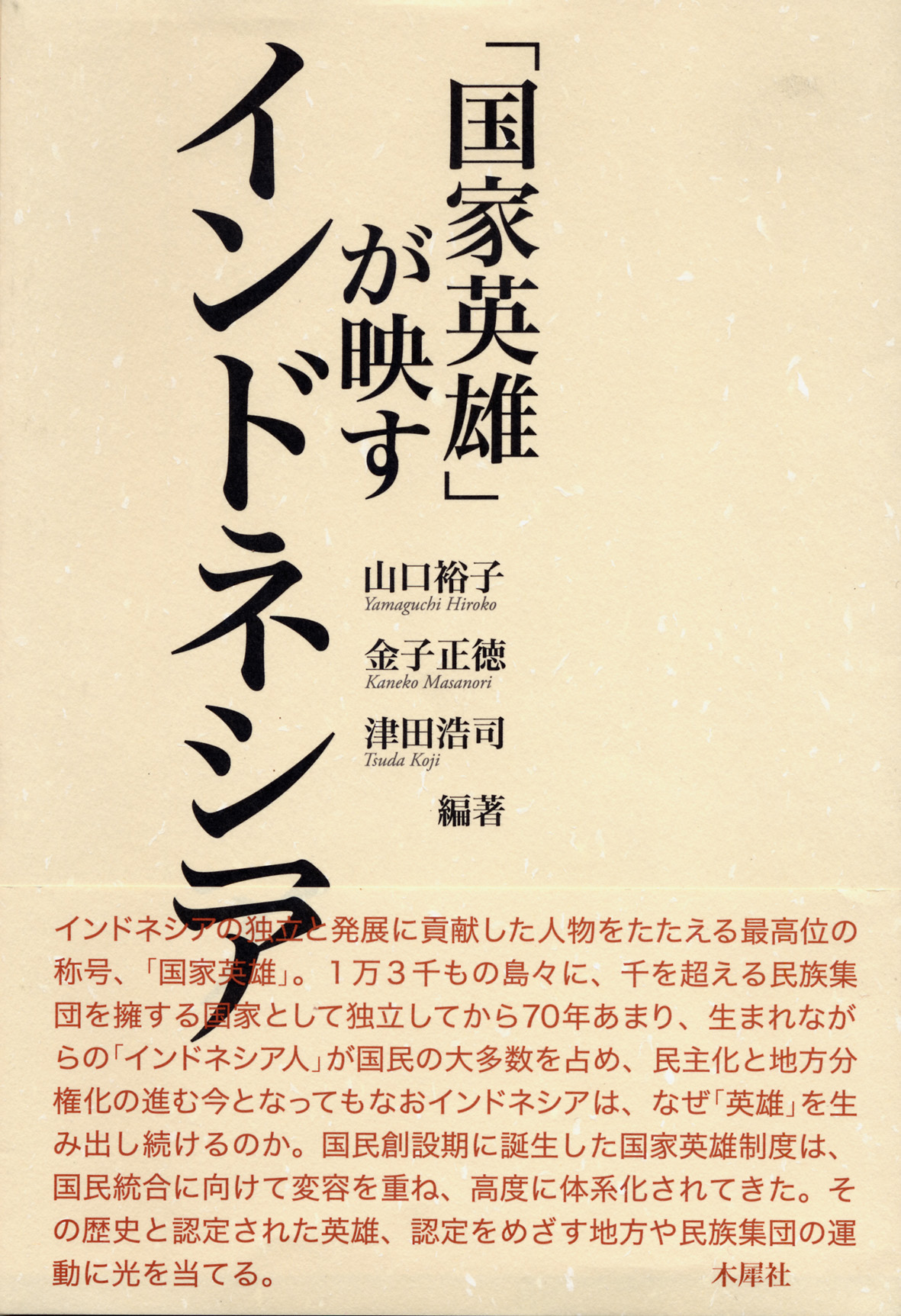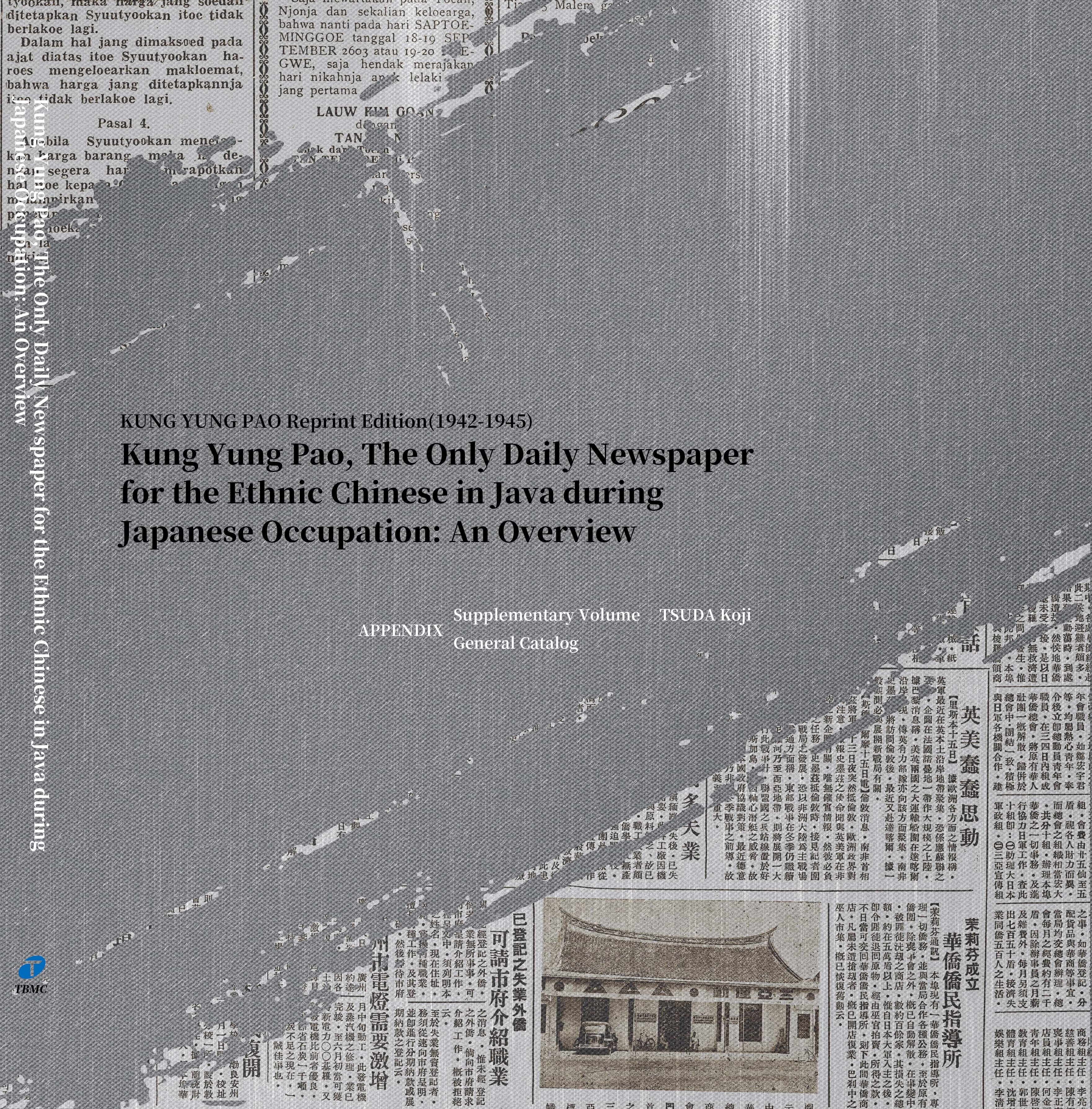
Title
Kung Yung Pao, The Only Daily Newspaper for the Ethnic Chinese in Java during Japanese Occupation An Overview
Size
94 pages, APPENDIX: Supplementary Volume of Kung Yung Pao (1942-1945) Reprint Edition
Language
English
Released
March, 2020
Published by
Transmission Books & Microinfo
Book Info
See Book Availability at Library
Kung Yung Pao, The Only Daily Newspaper for the Ethnic Chinese in Java during Japanese Occupation
Japanese Page
During the Asia-Pacific War, the Japanese army swept across most of Southeast Asia, establishing military administrations throughout the region, and as part of their pacification activities they published newspapers in different areas. On the island of Java, the political and economic centre of the former Dutch East Indies (present-day Indonesia), with a population of close to fifty million, there were published under the military administration of the Japanese 16th Army one Japanese paper (Djawa Shinbun, launched by staff dispatched by the Asahi Shinbun Company), five local-language (Indonesian) papers (one metropolitan paper and four regional papers), and also the Kung Yung Pao, a daily newspaper aimed at the approximately 700,000 ethnic Chinese living in Java at the time. Up until now, this newspaper had been mentioned by name in many studies but had not been examined in detail, and the actual circumstances of its publication, the people involved, and so on have been shrouded in mystery. This book tells the full story of the Kung Yung Pao.
Ethnic Chinese in prewar Java were extremely diverse, being differentiated by the length of residence in Java and corresponding degrees of indigenization, origins, political inclinations, and so on, and there existed a plethora of newspapers to cater to the needs of these ethnic Chinese. When the Japanese army occupied Java in March 1942, newspapers deemed to be “anti-Japanese” were immediately closed down (and their chief executives arrested and sent to internment camps), while “pro-Japanese” newspapers were taken over and gradually merged or discontinued, and the Kung Yung Pao was brought out as the sole propaganda paper for ethnic Chinese. However, because ethnic Chinese in contemporary Java were broadly divided by the languages they used in everyday life, there were published separately within the same company premises two editions of the Kung Yung Pao, one in Chinese and the other in Malay (Melayu, now known as Indonesian), and this setup continued until the end of the war. At the same time, the Japanese army disbanded the many existing ethnic Chinese groups and organizations and instead established in each province a Kakyo Sokai (HCCH or General Association of Overseas Chinese) and branches thereof for the centralized supervision and control of ethnic Chinese throughout Java. The Kung Yung Pao, too, served as a means to provide information in a centralized manner to Java’s ethnic Chinese community, which was extremely divided in its views.
This book begins by describing the linguistic circumstances of the ethnic Chinese community in prewar Java and the genealogy of Chinese newspapers, and then, making full use of Japanese, Indonesian, Chinese, and Dutch sources, it clarifies in detail the circumstances that led to the publication of the Chinese and Malay editions of the Kung Yung Pao and the manner in which it was edited, including the system of censorship. In addition, by presenting an overview of the contents of both editions of the Kung Yung Pao, it is argued that, even though it was a propaganda paper, it is an extremely valuable source of material for gaining a glimpse of the dynamism in the ethnic Chinese community during the war.
In 2019, a facsimile reproduction of the Kung Yung Pao, based on high-definition photographs of original copies held by the National Library of Indonesia, was published under the title Kung Yung Pao Reprint Edition (1942–1945) (32 volumes + 1 supplementary volume). The supplementary volume includes a bibliographical introduction in Japanese (also translated into Chinese), and the present book has been rewritten in English for a broader readership and includes several important additional findings. An index of issues of the Kung Yung Pao contained in the reprint edition has been appended to this book, and I hope that readers will make use of it for research purposes.
(Written by TSUDA Koji, Associate Professor, Graduate School of Arts and Sciences / 2020)
Table of Contents
1. The Ethnic Chinese Community and Newspapers in the Dutch East Indies before the War
2. The Japanese Military Administration in Java and Control over Newspapers: The Origins of Kung Yung Pao
3. Characteristics of the Newspaper Kung Yung Pao
Epilogue
List of the Newspapers' Pages Contained in KUNG YUNG PAO Reprint Edition (1942-1945)
Related Info
http://sites.anthro.c.u-tokyo.ac.jp/tsuda/home/published_works/kungyungpao/overview



 Find a book
Find a book


 eBook
eBook